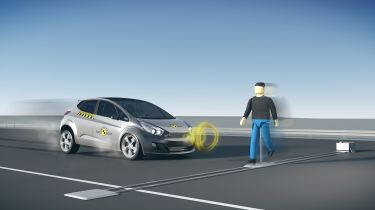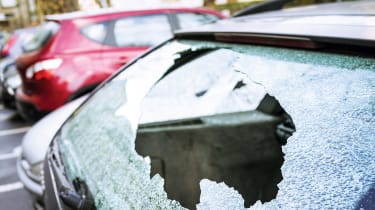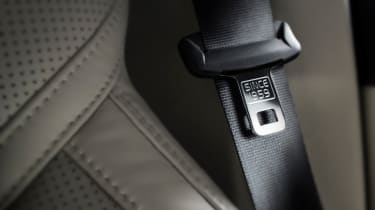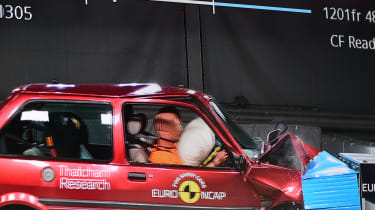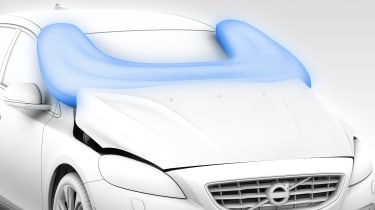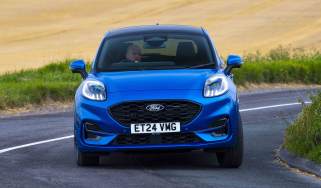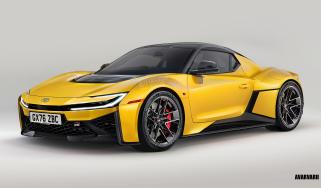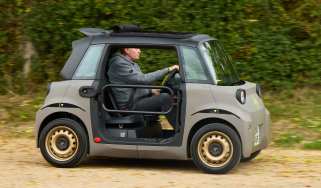The evolution of car safety: a history
We’ve catalogued the development of vehicle technologies that have brought significant improvements to road safety
From 1965 to 2018, the number of vehicles on British roads more than trebled; yet during the same period, the number of road deaths reduced by over three quarters. That’s an astonishing achievement. While several factors – including changing attitudes to drink driving and improved medical treatments – have contributed to the fall in deaths on our roads, improvements in car safety have played an enormous role.
To celebrate this, we’ve put together a list of the most significant laws, legislation changes and technical innovations that have come about since the early days of the motor car. From the seatbelt to automatic emergency braking systems, we’ve seen some huge changes over the years and they’ve all contributed to keeping road users safe.
Key car safety innovations: 1919 to date
1919: Safety glass
Even in these early days of motoring manufacturers realised that using normal glass in cars was unacceptable, and safety glass that shattered into tiny pieces, rather than breaking into lethal shards, was developed.
1946: Radial tyres
Radials, which remain the industry standard today, are constructed from cords that run perpendicular across the surface of a tyre. This provides more strength across the tread while also improving grip.
1959: Seatbelts
Volvo introduces the first three-point seatbelt – it’s still one of the most effective safety devices of all time. Volvo estimates the three-point seatbelt has saved more than a million lives.
1959: Crumple Zones
Crumple zones help the car to fold up in a controlled manner during a crash, absorbing energy that would otherwise impact the driver. Crumple zones are now integral to modern car design.
1960: Padded dashboard
Another innovation from Volvo, padded dashboards were introduced in an attempt to reduce face and chest injuries in crashes.
1965: First seatbelt legislation
All new cars sold are required to have seat belt anchorage points for the front outer seats.
1966: Anti-lock brakes (ABS)
The Jensen FF becomes the first production car to feature mechanical anti-lock brakes, based on aircraft technology.
1967: Seatbelt law
Ruling passed that all cars sold in Britain must be fitted with front seatbelts.
1968: Head restraints
Volvo delivers another first, with front-seat head restraints. These protect the head and neck in rear-end collisions.
1970: Pedestrian-friendly front-end designs
Design of windscreens, bumpers, headlights, A-pillars and other front end features altered to lessen the impact suffered by pedestrians if they are hit by a car.
1973: Airbags
Airbags cushion occupants from hard cabin surfaces in the case of a crash. The first airbags were bulky and emerged from the steering wheel, but modern cars have passenger, knee, shoulder, curtain, and even seatbelt bags.
1978: Electronic ABS
Mercedes advances ABS by introducing an electronic system in its high-end S-Class model.
1983: Wearing of front seatbelts made compulsory
It becomes compulsory to wear front seatbelts in the UK. Over 90 per cent of British drivers immediately comply.
1986: Tyre-pressure monitoring system
The first car to feature TPMS was the Porsche 959 and works by measuring the air in the tyres and alerting the driver if the tyres are over or under-inflated via a dashboard display.
1987: Rear seatbelt law
The latest round of seatbelt rules come into force – all cars sold in the UK must now be fitted with rear seatbelts.
1991: Side-impact protection
Volvo combines side-impact bars with seats on transverse rails to create its Side Impact Protection System (SIPS).
1991: Wearing of rear seatbelts made compulsory
It becomes a legal requirement for seatbelts to be worn by all rear-seat passengers, including adults.
1994: Side-impact airbag
Once again, Volvo is at the forefront of safety as it introduces side-seat protection airbags in its 850 models to supplement its metal side-impact bars.
1995: Electronic stability control
Mercedes, with the help of Bosch, becomes the first maker to use ESC, with the S-Class again leading the way.
1996: Knee airbag
Kia adds the first knee airbag to the Sportage SUV, although this feature doesn’t reach the UK until the 2003 Toyota Avensis.
1996: Euro NCAP Established
The first Euro NCAP meeting takes place, with the crash testing body’s first results released the following year.
1997: First Euro NCAP results
Euro NCAP begins testing. Volvo S40 comes top with four stars for Adult Occupant Protection.
1997: Isofix
Developed jointly by Volkswagen and child-seat maker Britax. Allows compatible child seats to easily click into car seats.
1997: Whiplash protection
Swedish manufacturers Saab and Volvo were the first to design whiplash-minimising seats and head restraints
2001: First Euro NCAP full marks
The Renault Laguna is the first five-star car, while Euro NCAP introduces the seatbelt reminder assessment.
2003: Child safety rating
The safety rating test is made even tougher by the introduction of the child protection rating.
2005: Lane departure
This first appears in Europe in the Citroen C4, C5 and C6, and warns drivers when their car is moving out of a lane.
2005: Pop-up bonnet
Developed to lower the risk of injuries for pedestrians when hit by a car. First available on the Jaguar XK and Citroen C6.
2007: Blind-spot monitoring
Volvo S80 saloon offers a visual alert to notify drivers of vehicles in their blind spots.
2007: Fatigue detection
This system scans the driver’s head and face looking for telltale signs of tiredness, such as how frequently blinking occurs. If the system considers the driver is too tired, a warning alert will activate.
2008: Autonomous braking
Introduced into the Volvo XC60 in 2008. The system senses stationary traffic, warns drivers and primes the brakes to stop.
2008: More Euro NCAP tests added
Euro NCAP releases results on its first rear impact (whiplash) protection test.
2009: New Euro NCAP rating
Stricter rating is a score for adult occupant, child occupant, pedestrian and safety assist. Cars without stability control as standard can’t get five stars.
2015: Pedestrian detection in darkness, barrier detection and active cruise with steering
This tech arrives on the next Volvo XC90. Advanced pedestrian detection spots people in the dark, barrier detection steers and brakes if you veer towards a barrier, and active cruise follows cars ahead and lane markings.
2018: Car2Car and Car2Infrastructure technology
Cars communicate with those in front and warn of slippery roads or a breakdown in the way. Also works with traffic lights to tell you how long before it turns green.
Read more about the way the latest car safety tech is tested
Find a car with the experts
